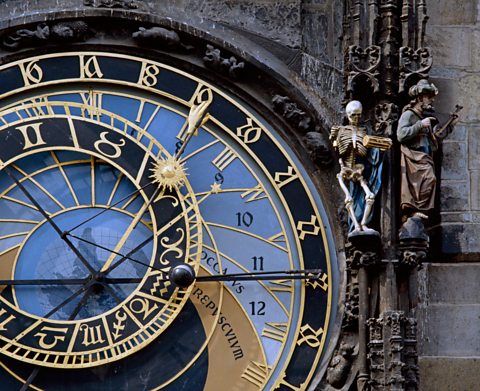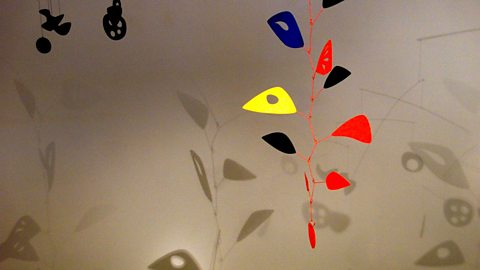Movement in art and design
Movement in art and design relates to physical changes that happen over time. This can be represented using actual movement or by using a range of different compositional or media techniques.
Literal movement
Literal or actual movement can be clearly seen in media works such as film, video and animation.
Physical work can include movement and moving parts. Movement could be mechanically driven or happen as a result of natural effects.

The Astronomical Clock in Prague (1410) features a number of moving statues. These draw our attention more than static figures would.
Every hour the skeleton figure rings a bell and turns a sand timer. These symbolic objects and their link to passing time remind the viewer of human mortality.


The artist Alexander Calder created mobileA work of 'kinetic art' with parts that move as a result of natural effects, such as wind or flowing water, or mechanical means, such as motors. that move and change composition because of air currents. The gentle movement of organicIrregular, flowing or relating to nature. In art and design, organic shapes, forms or lines are imperfect as opposed to perfect geometric elements. shapes suggests images from nature ÔÇô flying birds, fluttering insects, gently spinning leaves.
As with his other mobiles, the shapes of Cascading Flowers (1949) are carefully arranged. The composition stays visually balanced even as the different elements move and change position.
